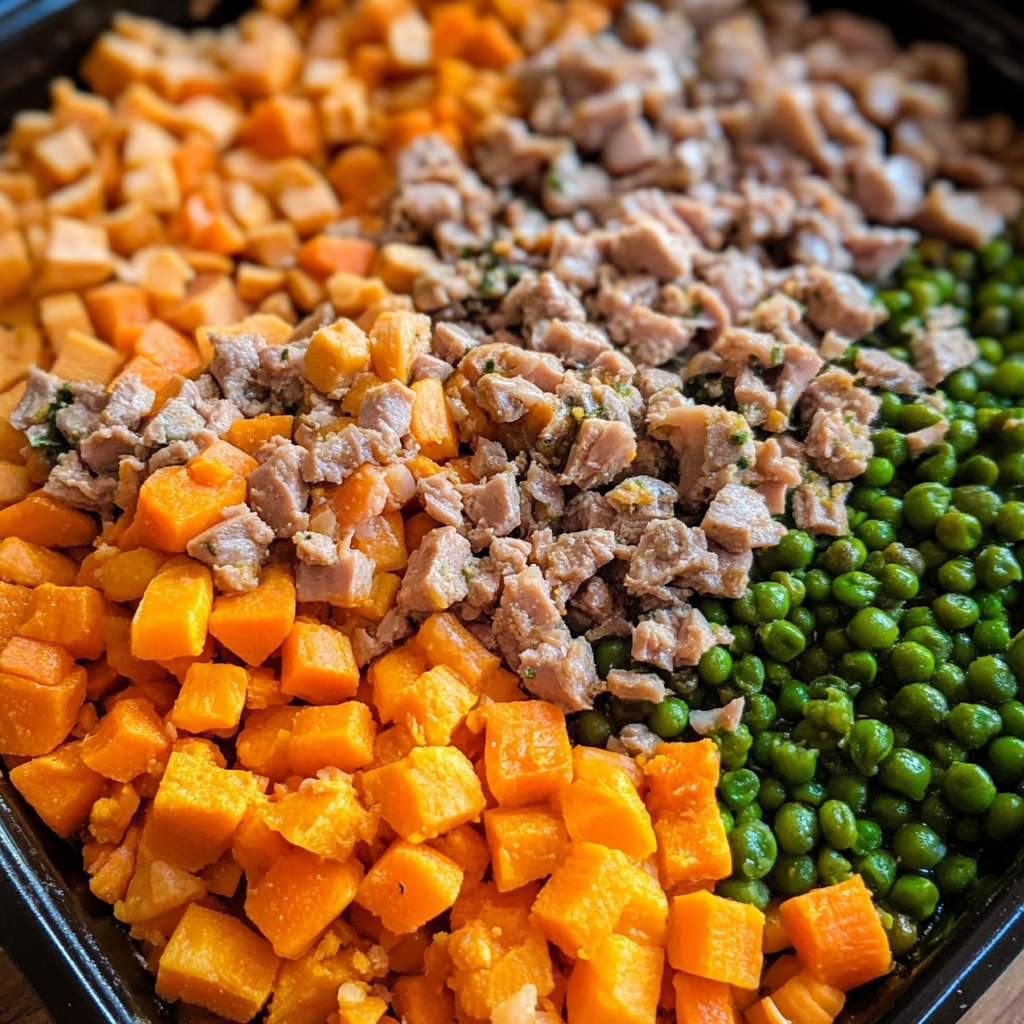
Did you know that approximately 10% of all allergy cases in dogs are food allergies? This staggering statistic brings us to the question, “Could the homemade hypoallergenic dog food be the solution you’ve been searching for?” Crafting tailored meals at home allows you to monitor exactly what goes into your pup’s diet, ensuring they get the nutrients they need without the common allergens found in many commercial foods. Dive into these seven best recipes, designed with your furry friend’s health and happiness in mind.
Ingredients List
Each recipe below has been curated to include healthy, nourishing ingredients that are least likely to cause allergic reactions in dogs. Where possible, suggestions for substitutions have been provided to cater to even the most sensitive pups.
- Protein sources: Choose from lean meats like turkey, venison, or duck. For dogs with sensitivities to common meats, novel proteins like kangaroo or pheasant can be a game-changer.
- Carbohydrates: Opt for easily digestible options like sweet potatoes, pumpkins, or peas. These not only add dietary fiber but also keep your dog’s energy levels stable.
- Fats: Incorporate healthy fats such as olive oil or flaxseed oil to support your dog’s coat and skin health.
- Vegetables: Green beans, carrots, and zucchini offer vital nutrients and are typically well-tolerated.
- Special Additions: For an extra health boost, add turmeric for its anti-inflammatory properties or parsley for fresh breath.
Remember, the goal is to customize the meal plan according to your dog’s specific needs, so feel free to adjust as necessary.
Timing
Expect to spend around 30 to 90 minutes preparing these meals, depending on the recipe. This time investment results in a week’s worth of food, which is about 20% less time than average homemade dog food recipes require. Cooking in batches is a time-saver and ensures your pup has a steady supply of delicious and nutritious meals.
Step-by-Step Instructions
1. Select the Protein
Begin by choosing a lean meat. Cook it thoroughly to avoid any harmful bacteria. For an extra taste, you might consider lightly searing the meat but ensure it remains easily digestible for your pup.
2. Prepare the Carbohydrates
Boil or steam the carbohydrates until soft. This enhances their digestibility, ensuring your dog can absorb all the nutrients effectively.
3. Mix in the Fats
Once the protein and carbs are prepared, mix in the recommended amount of healthy fats. This step is crucial for incorporating essential fatty acids into your dog’s diet.
4. Add Vegetables
Finely chop or puree the vegetables before adding them to the mix. This ensures they are easy for your dog to digest.
5. Special Additions
Finally, sprinkle in any of the special additions you’ve chosen. These can be mixed in or used as a topping for an extra health kick.
Nutritional Information
Each of these recipes is balanced to provide optimal nutritional benefits while minimizing the risk of allergic reactions. They are rich in protein, have a moderate amount of carbohydrates, and are supplemented with essential fatty acids, vitamins, and minerals. The specific nutritional breakdown will vary depending on the chosen ingredients, but every effort has been made to ensure a balanced diet.

Healthier Alternatives for the Recipe
For dogs with grain allergies, substituting grains with legumes like lentils or chickpeas can offer a nutritious alternative. If your dog is allergic to poultry, try using novel proteins such as kangaroo or duck to keep the diet varied and interesting.
Serving Suggestions
Serve the food at room temperature to make it more appealing. You can also add a small amount of broth (ensure it’s free from onions, garlic, and excessive salt) to add moisture, especially if your dog prefers wet food.
Common Mistakes to Avoid
- Overfeeding: Even with hypoallergenic food, it’s crucial to stick to portion control based on your dog’s activity level, size, and weight.
- Ignoring Protein Rotation: To prevent the development of new allergies, rotate the protein sources every couple of months.
- Skipping Vet Consultation: Always consult with a veterinarian before making significant changes to your dog’s diet, especially if they have specific health concerns.
Storing Tips for the Recipe
These meals can be refrigerated in an airtight container for up to 5 days. For longer storage, consider freezing portions in freezer-safe bags or containers, allowing them to last for up to 3 months. Thaw overnight in the refrigerator before serving.
Conclusion
Homemade hypoallergenic dog food offers a wholesome and tailored alternative to store-bought options, promising happy and healthy pups. With these seven recipes, feeding time becomes both a nutritious and delicious affair. Try them out, observe your dog’s reactions, and always be open to adjusting the recipes to suit their taste and health needs better.
Ready to embark on a culinary journey for your pup? Share your experiences or any personal tweaks to these recipes in the comments below, or explore similar posts for more inspiration on keeping your dog happy, healthy, and well-fed.
FAQs
Q: How do I know if my dog needs hypoallergenic food?
A: Signs your dog might need hypoallergenic food include chronic ear infections, skin rashes, gastrointestinal problems, and frequent licking or biting of their paws. Always consult a vet if you suspect food allergies.
Q: Can I use beef in hypoallergenic dog food?
A: While beef is a common allergen, it can be used if your dog is not allergic to it. However, novel proteins are generally recommended for hypoallergenic diets.
Q: How often should I introduce new ingredients?
A: When introducing new ingredients, do so one at a time and monitor your dog for any adverse reactions over the following days. This cautious approach helps in pinpointing any potential allergies.

Leave a Reply